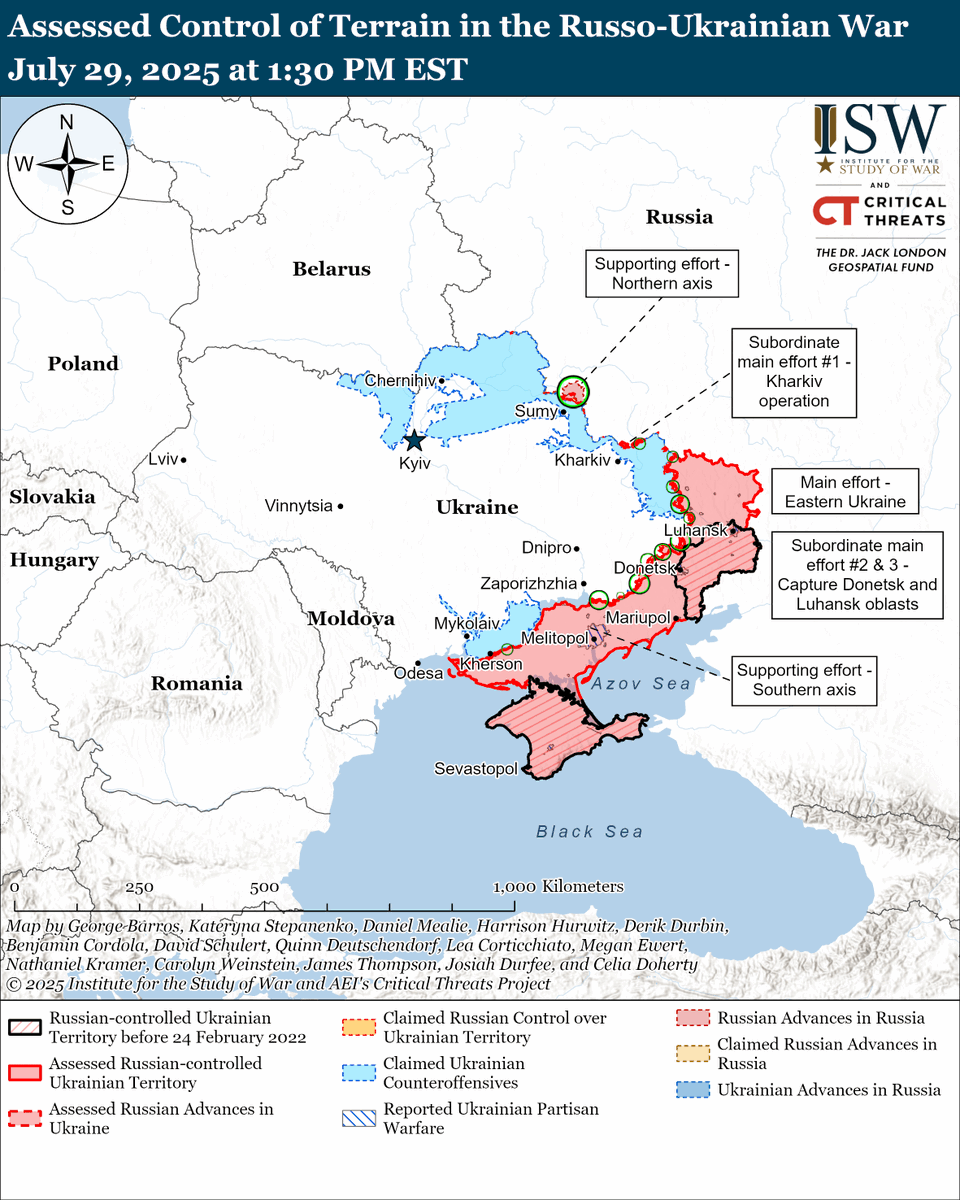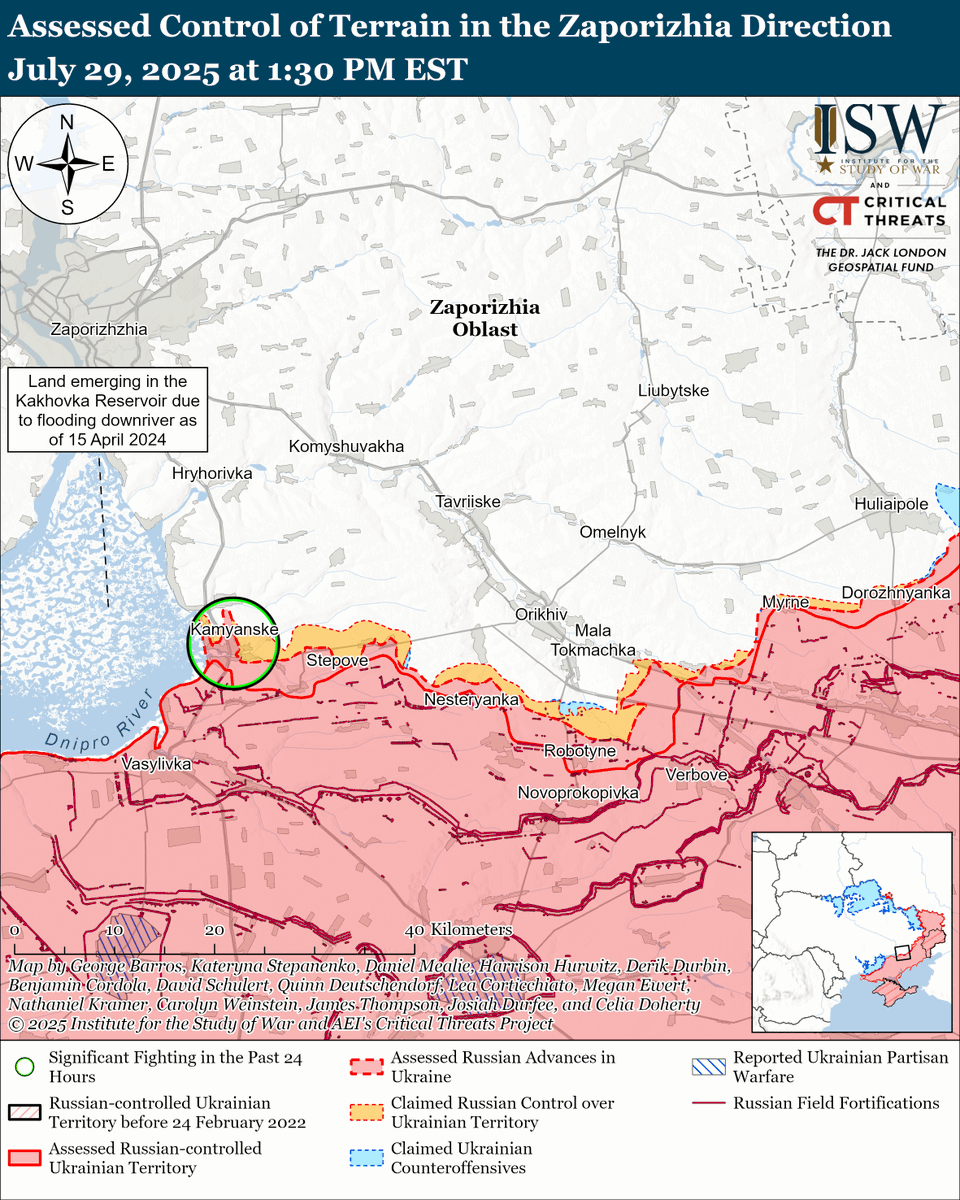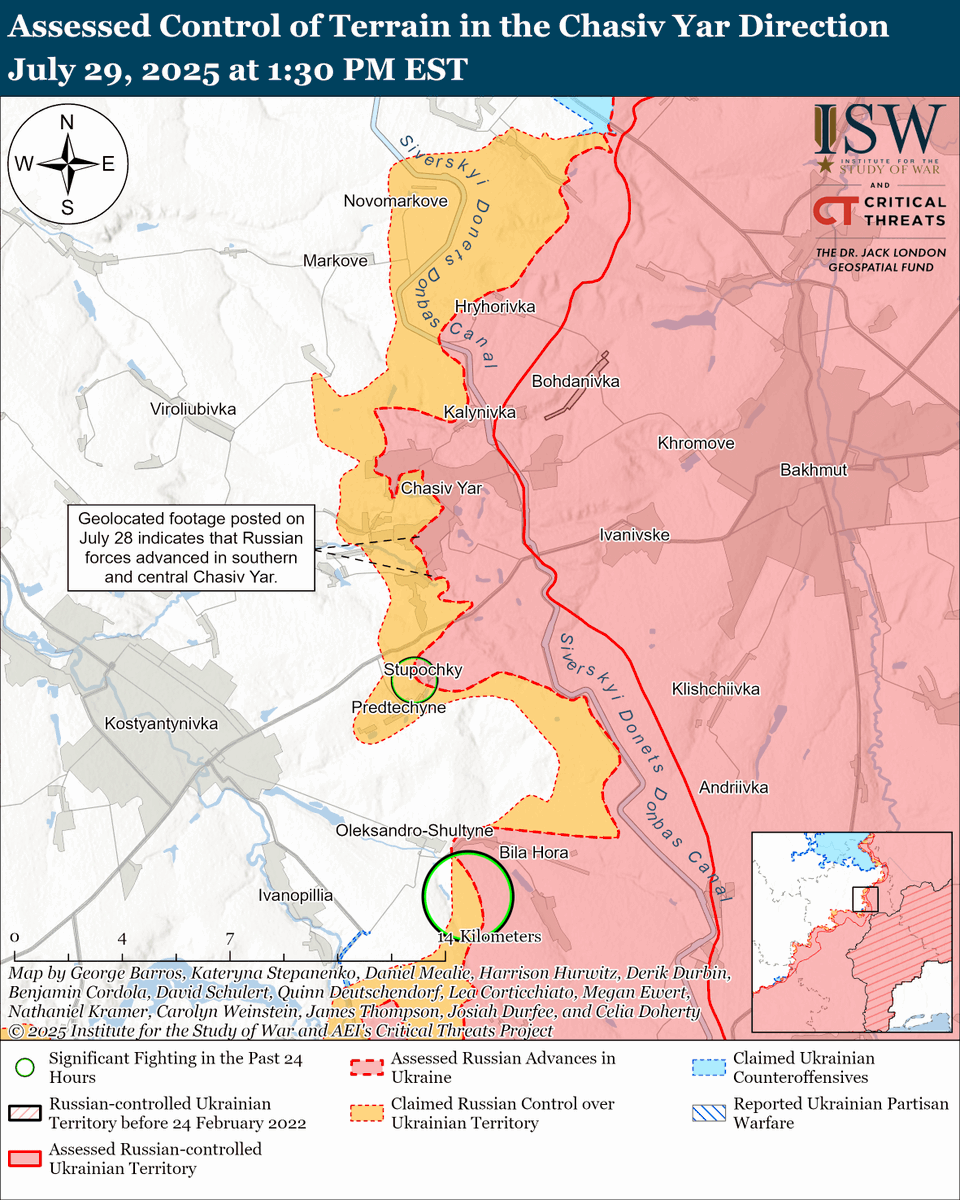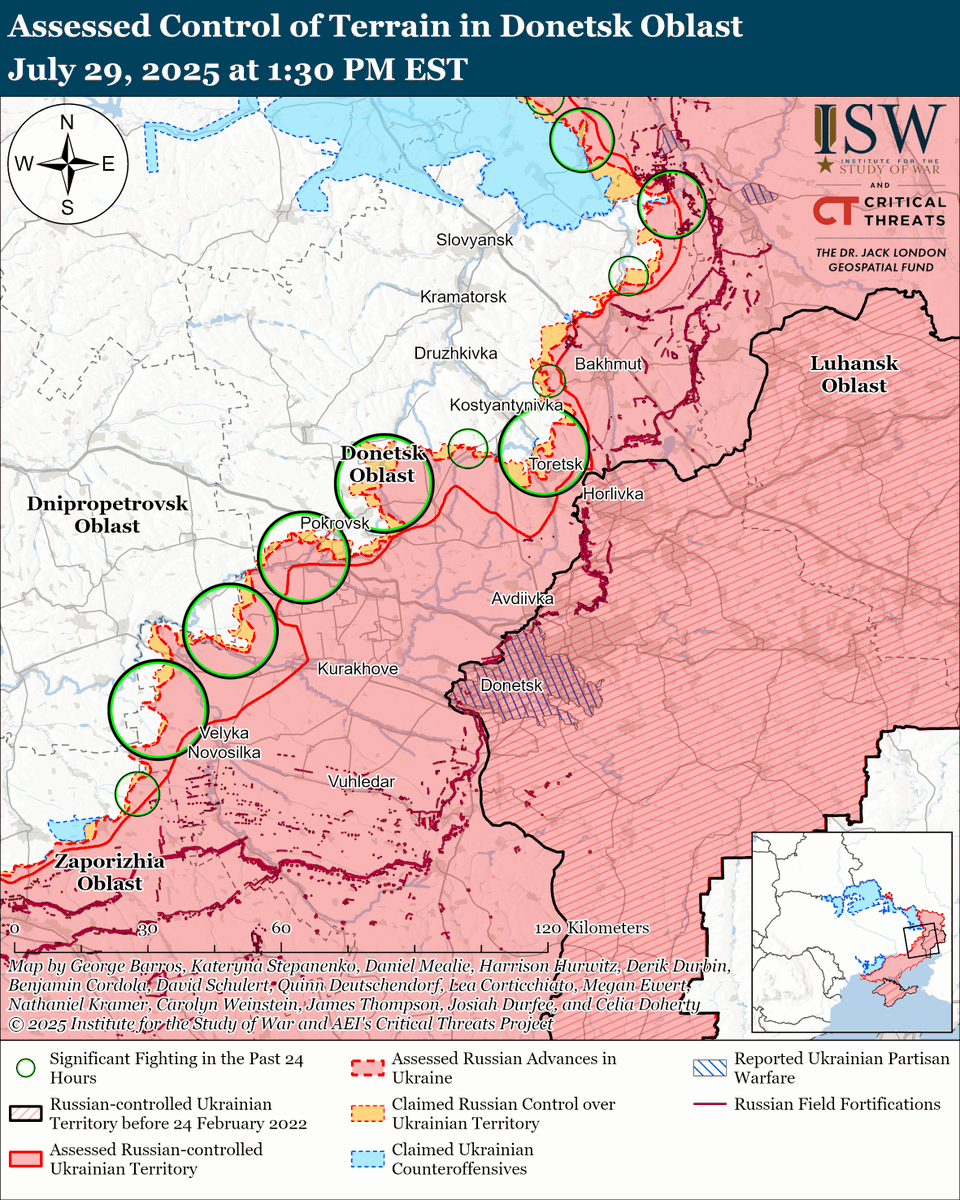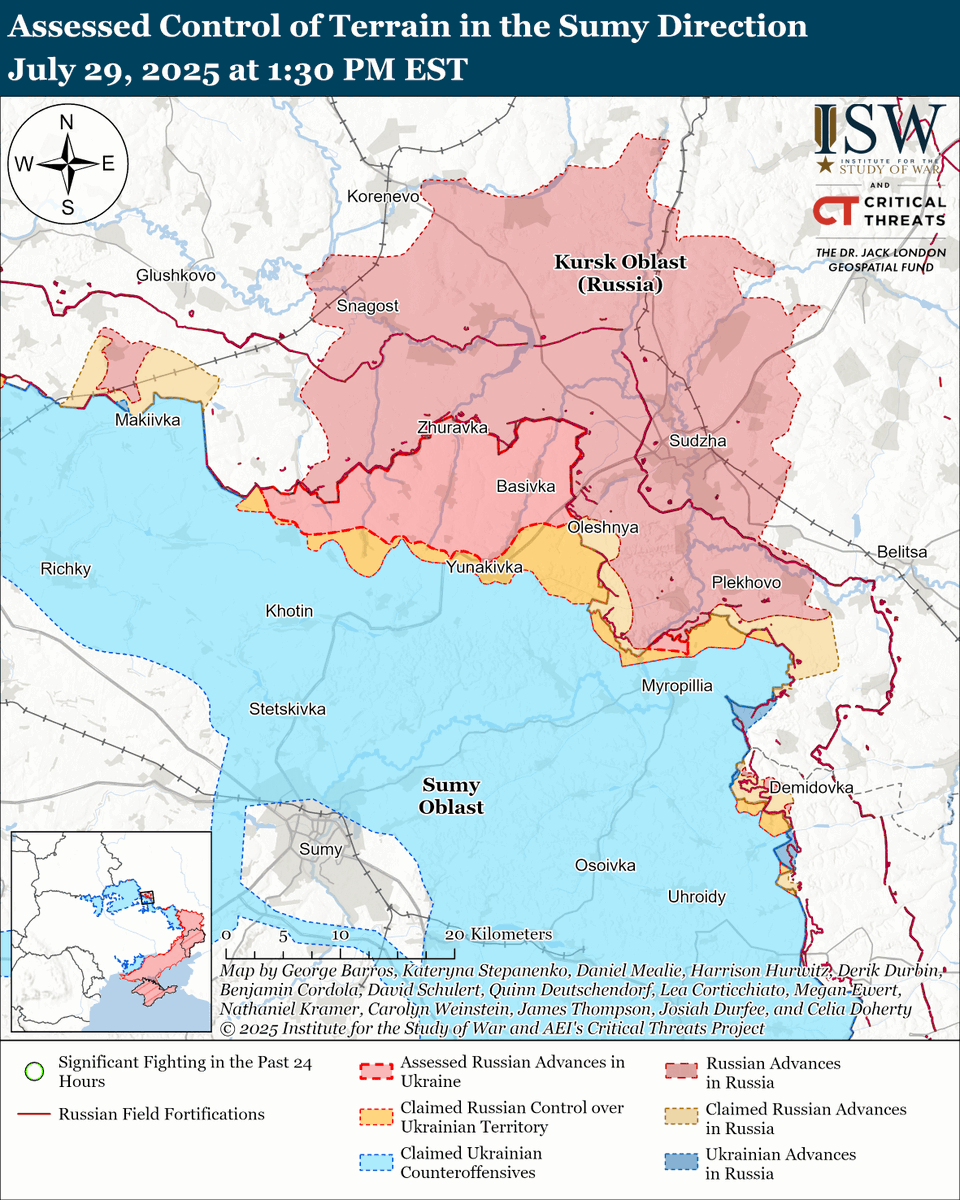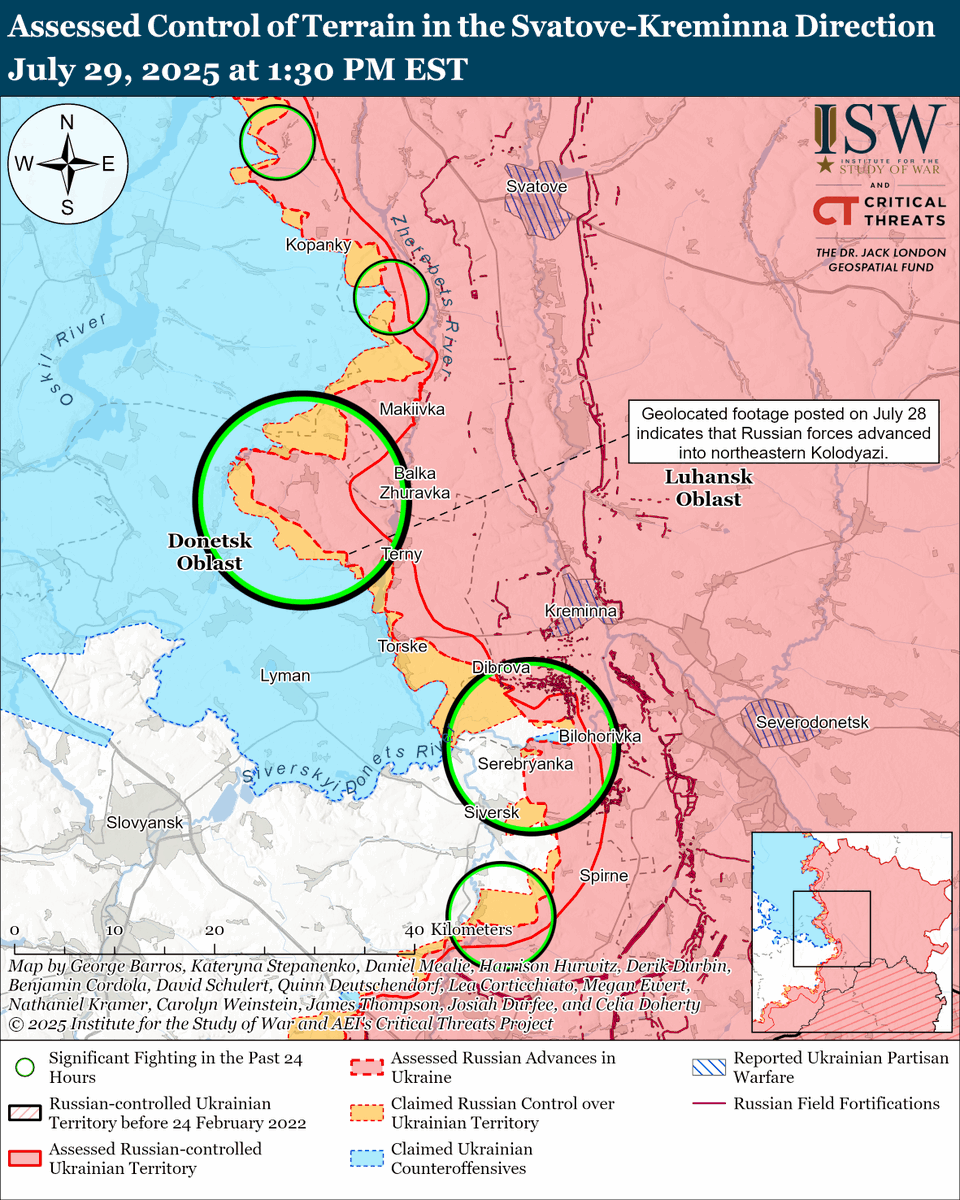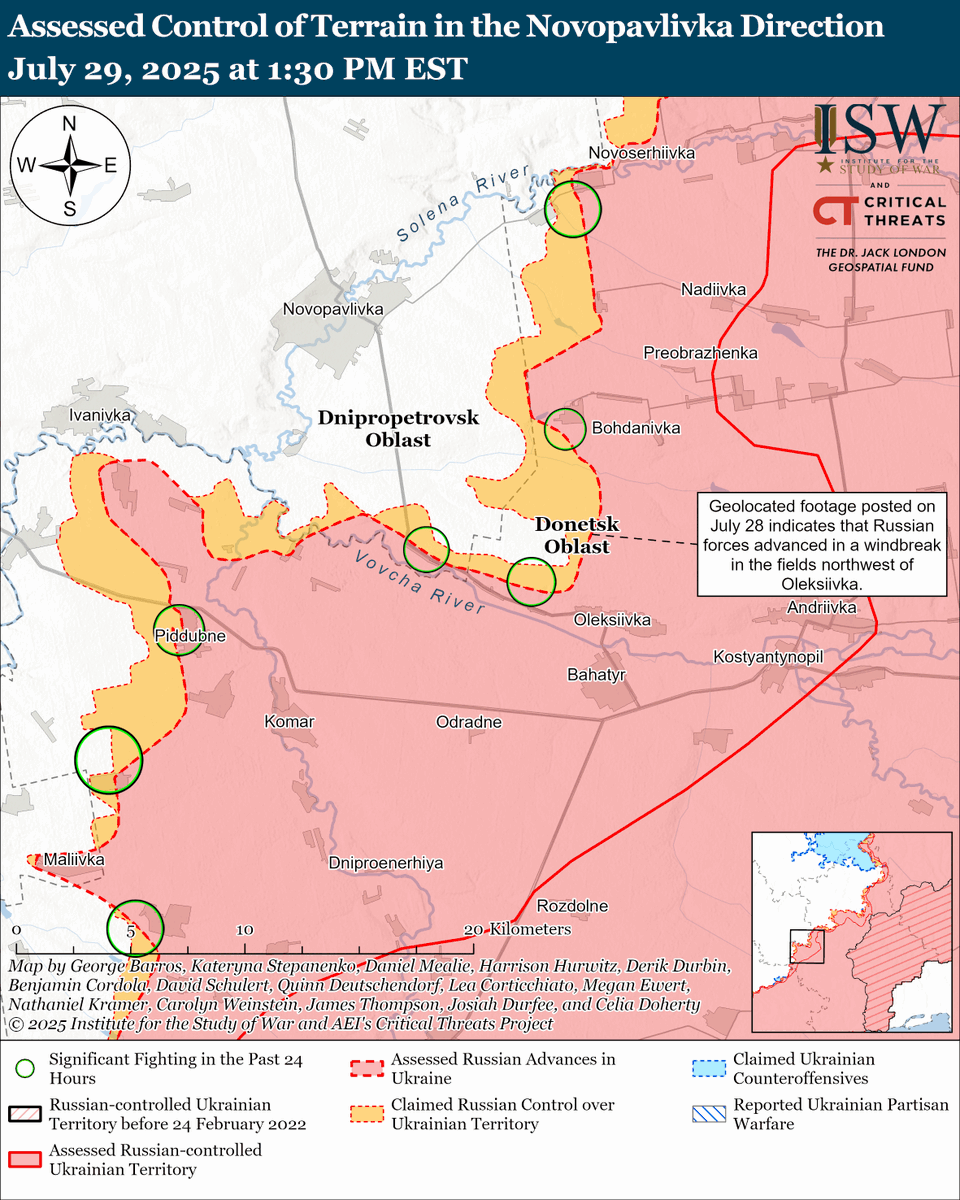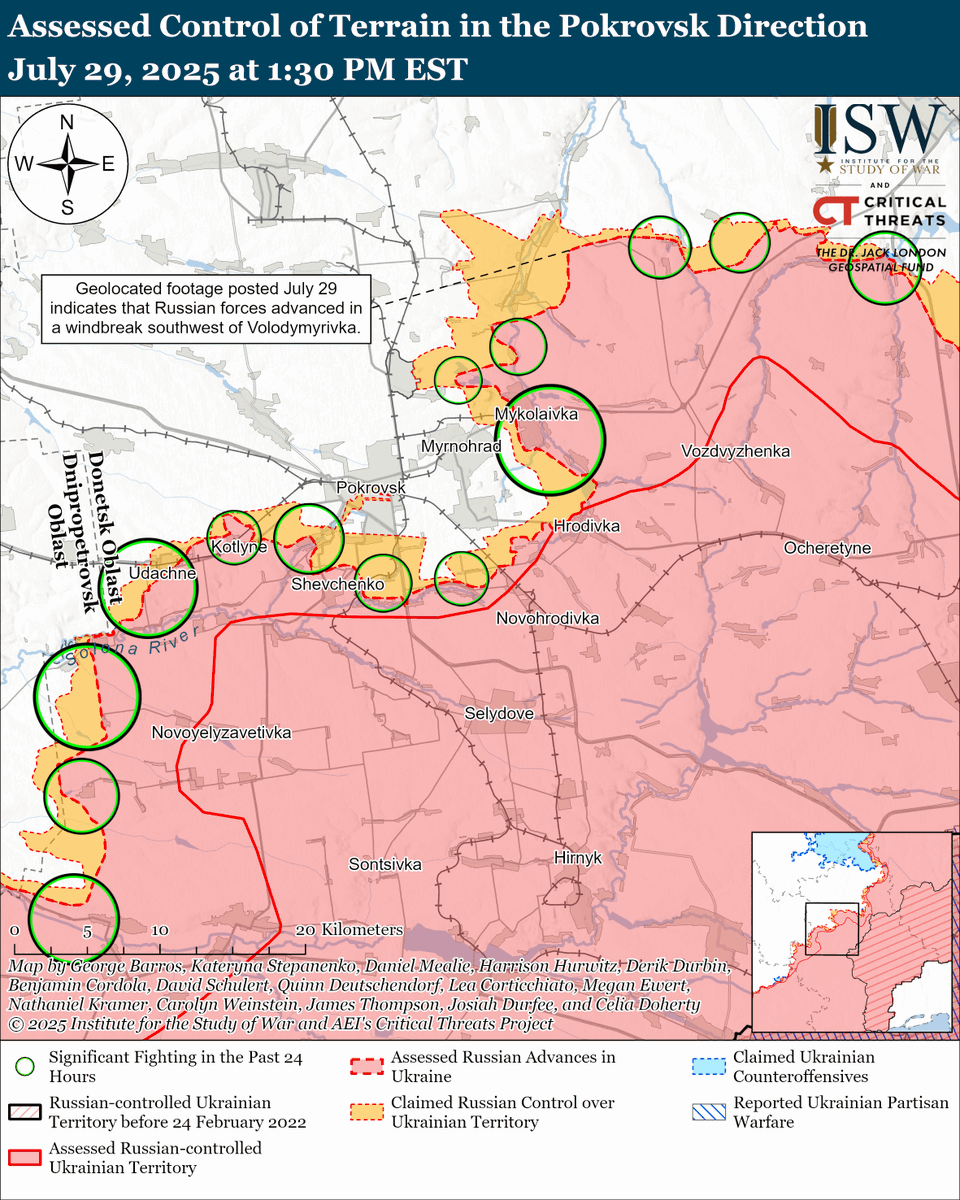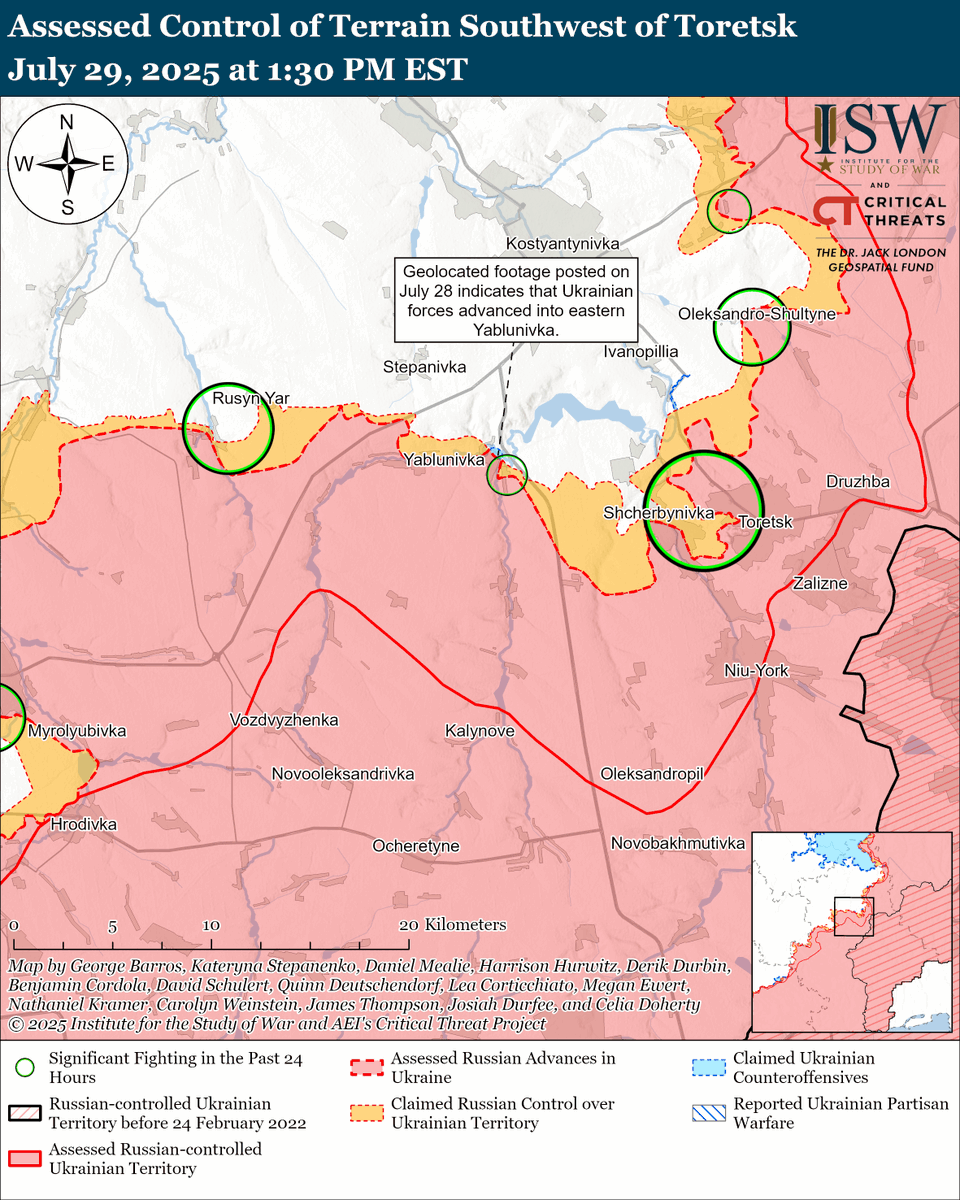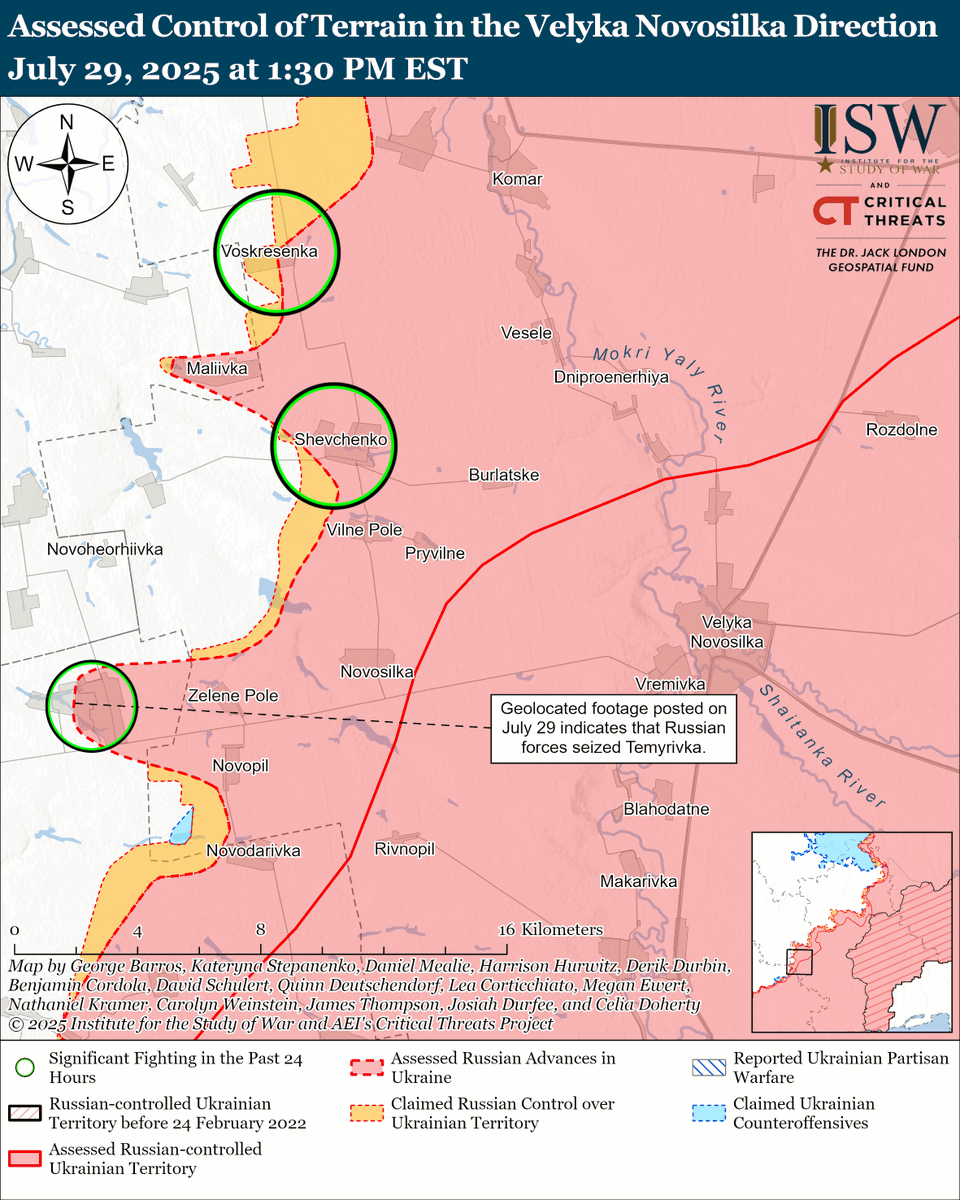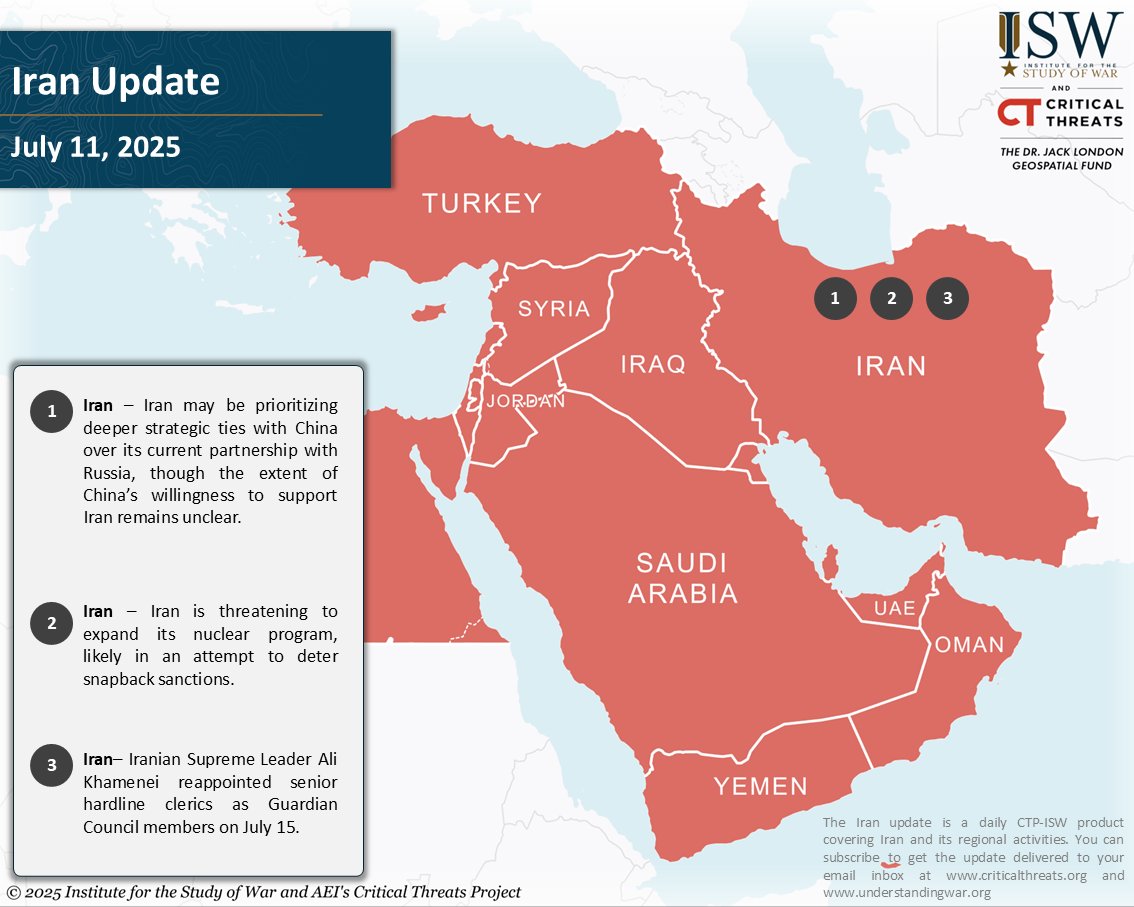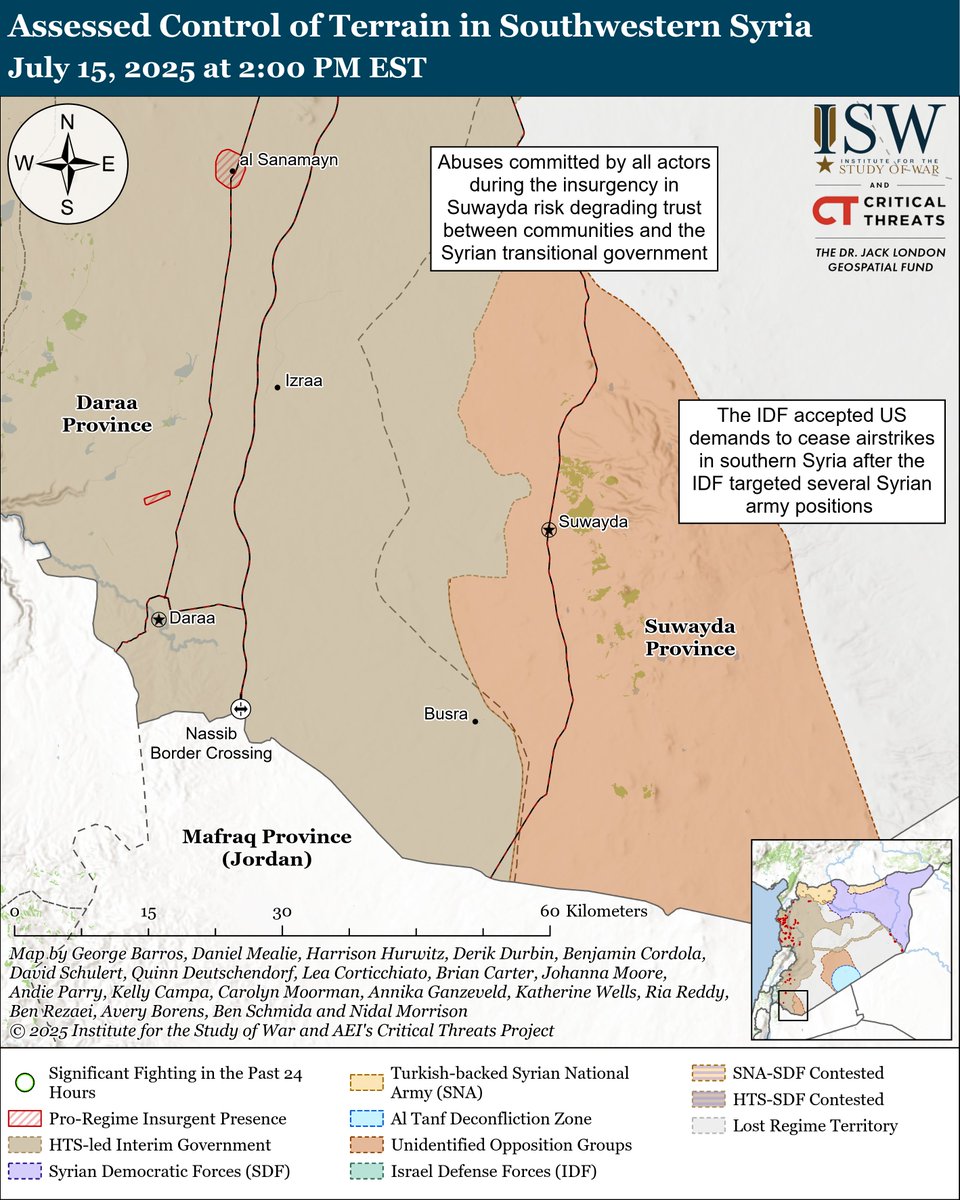NEW: Russian sources claimed on August 9 that Ukrainian forces advanced further east in Kursk Oblast but are likely no longer operating as far north or as far west as Russian sources previously claimed on August 8. Tactical Update🧵(1/12)
1/ Geolocated footage published on August 9 indicates that Ukrainian forces were recently operating west of Sudzha, within the settlement, north of Sudzha near Kazachya Loknya, and northeast of Leonidovo and in Dmitriukov.
1/ Geolocated footage published on August 9 indicates that Ukrainian forces were recently operating west of Sudzha, within the settlement, north of Sudzha near Kazachya Loknya, and northeast of Leonidovo and in Dmitriukov.

2/ A Russian milblogger claimed on August 9 that Ukrainian forces conducted another cross-border incursion northeast of Sumy City and advanced towards Kucherov (roughly one kilometer from the international border) but have not entered the settlement. 

3/ A Russian milblogger claimed that Ukrainian forces in Kursk Oblast advanced as far east as Plekhovo (southeast of Sudzha) on the left bank of the Psyol River. 

4/ ISW is recessing the claimed limit of Ukrainian advances up to Snagost (south of Korenevo), given that a Russian milblogger claimed on August 8 that Russian forces began clearing the settlement. 

5/ ISW is also recessing the claimed limit of Ukrainian advances to the northern outskirts of Malaya Loknya (northwest of Sudzha and roughly 13 km from the international border) as Russian milbloggers claimed on August 9 that Russian forces counterattacked near the settlement. 

6/ Russian milbloggers continued to issue contradictory statements about Ukrainian positions in Sudzha. One source claimed that Ukrainian forces are not operating within Sudzha, while another claimed that Ukrainian troops are located in the settlement but cannot operate freely. 

7/ Other Russian milbloggers claimed that Ukrainian forces partially control Sudzha and that the town is a contested "gray zone."
8/ Russian milbloggers claimed that Ukrainian forces are also operating northeast of Sudzha near Martynovka; north of Sudzha near Vtoroy Knyazhiy, Ivnitsa, Zaoleshenka, and Russkoye Porechnoye (16 kilometers from the international border); and west of Sudzha near Goncharovka. 

9/ A Russian milblogger claimed that Russian forces control the area near Korenevo (north of Sumy City and roughly 23 kilometers north of the international border) and denied reports of fighting on the settlement's outskirts. 

10/ The Russian milblogger claimed on August 8 that Ukrainian forces control Novoivanovka (SE of Korenevo) and Lyubimovka (SE of Korenevo). Another Russian source claimed on August 9, however, that Russian forces regained lost positions in Novoivanovka and Leonidovo. 

11/ A Russian source claimed that there is no confirmation of Ukrainian forces operating in Kromskiy Byki. 

12/The vast majority of Russian reporting about Kursk Oblast on August 9 is not consistent with previous claims that mobile Ukrainian groups were operating beyond 20 kilometers into Kursk Oblast.
Latest: isw.pub/UkrWar080924
Latest: isw.pub/UkrWar080924
• • •
Missing some Tweet in this thread? You can try to
force a refresh































